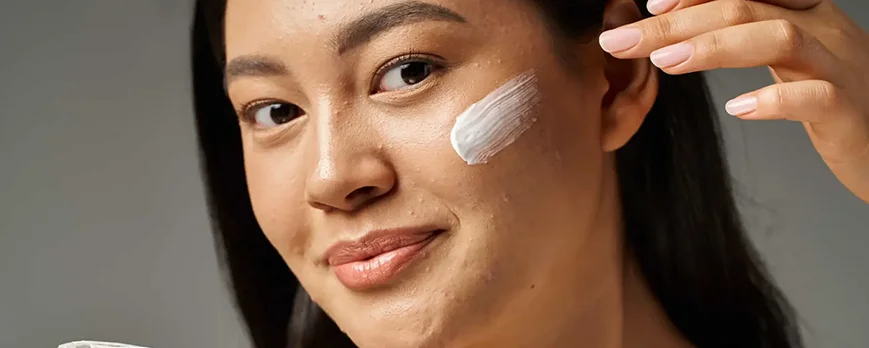ACNE EXPLAINED: WHAT DO THE DIFFERENT TYPES MEAN?
Chances are, you’ve dealt with different types of breakouts at some point. Maybe it was a whitehead that popped up before an important work event, a blackhead that just wouldn’t leave your nose, or a painful pimple that appeared out of nowhere. At first glance, they may seem like totally different skin problems, but in reality, they’re all types of acne.
Although the skin issues mentioned are the most known types, acne can also manifest in more severe forms that are more challenging to manage.
If you’re interested to learn about them and their effects on your skin, continue reading.
What is Acne?
Before going into the different types, it’s helpful to understand what acne is. Acne happens when your pores (tiny openings on your skin) get clogged with oil, dead skin cells, and sometimes bacteria. This buildup can cause inflammation, leading to the various types of skin blemishes you see on your skin. While acne usually appears on the face, it can also develop on the back, chest, and shoulders.
What Are the Different Types of Acne?
Ready to find out which types of skin issues you might be dealing with? Here’s a short list of the different types of acne:
-
Whiteheads
Whiteheads remain closed beneath the skin's surface, resulting in small, raised, white bumps. Because the pore opening is closed, the trapped oil, dead skin cells, and bacteria stay under the skin, giving these blemishes their usual white or flesh-colored appearance. Whiteheads are generally mild and non-inflammatory, but can develop into more severe acne if not left untreated..
-
Blackheads
Blackheads occur when clogged hair follicles open up, exposing trapped sebum and dead skin cells to the air. The dark coloration is not due to dirt but rather the oxidation (when something reacts with air) of sebum, which turns it black or brown. Blackheads typically appear as tiny spots and are a common form of non-inflammatory acne. They can be stubborn but often respond well to gentle exfoliation and topical treatments.
-
Papules
Papules are small, inflamed lesions that manifest as pink or red bumps on the skin. Unlike whiteheads or blackheads, papules do not contain pus but are tender to the touch due to underlying inflammation. These lesions form when clogged pores become irritated or infected by bacteria, causing redness and swelling.
Papules are caused by excess oil production, more bacteria on the skin, higher levels of androgens (hormones like testosterone), and certain medications like corticosteroids and anabolic steroids. Lastly, papules can develop into severe acne if untreated.
-
Pustules (Pimples)
Pustules, commonly known as pimples, are similar to papules but are topped with a visible white or yellow pus-filled head. These lesions often have a red and inflamed base and can be painful. Pustules form as the immune system’s response to bacterial infection inside clogged pores.
-
Nodules
Nodules are large, solid, and painful lumps that develop deep within the skin. Unlike superficial pimples, nodules are lodged beneath the surface and do not have a visible head. They can persist for weeks or months and are often difficult to treat without professional medical intervention. Nodules can cause significant discomfort and may lead to scarring if not addressed properly.
-
Cystic Acne
Cystic acne involves deep, inflamed, pus-filled lesions that are large and painful. These cysts form below the skin’s surface and can cause extensive damage to skin tissue, often resulting in scarring. This form of acne usually requires aggressive treatment, including prescription medications or procedures supervised by a dermatologist.
Comedogenic and Non-comedogenic Products
Now that you are familiar with the different types of acne and pimples, maybe it is time to take a closer look at the products you use every day.
Have you ever noticed that some skincare or makeup products seem to make your breakouts worse? That is because they could be comedogenic, meaning they’re likely to block your pores. When that happens, oil, dead skin, and bacteria can build up, leading to blackheads, whiteheads, or even inflamed pimples.
If you have acne-prone or sensitive skin, one smart move is to switch to products labeled non-comedogenic. These products are formulated to hydrate, protect, and treat your skin without triggering breakouts.
Looking to make the switch? Consider Celeteque® Dermoscience+® dermatologist-tested products for different skin types. Explore their Acne Solutions line, which includes Micellar Water, Oil Control Toner, Exfoliating Cleansing Stick, Acne Spot Corrector Gel, and more.
Celeteque® Dermoscience+® makes use only of derma-grade ingredients and is co-created with dermatologists to promote overall skin health. Whatever skin concern you have, Celeteque has you covered.
Merging science + aesthetics, it's skin care smart enough for you.
References:
https://my.clevelandclinic.org/health/diseases/22039-whiteheads
https://www.niams.nih.gov/health-topics/acne
https://www.nhs.uk/conditions/acne/
https://www.ncbi.nlm.nih.gov/books/NBK459173/
https://www.nhs.uk/conditions/acne/
https://my.clevelandclinic.org/health/diseases/22038-blackheads
https://my.clevelandclinic.org/health/diseases/22905-acne-papules
https://my.clevelandclinic.org/health/diseases/22765-inflammatory-acne
https://www.sciencedirect.com/topics/medicine-and-dentistry/pustule
https://my.clevelandclinic.org/health/diseases/22468-pimples
https://my.clevelandclinic.org/health/diseases/22888-nodular-acne
